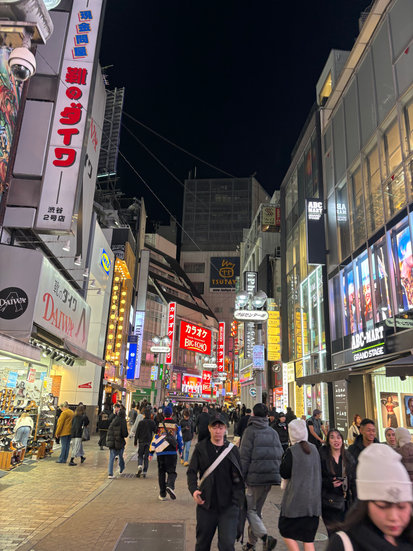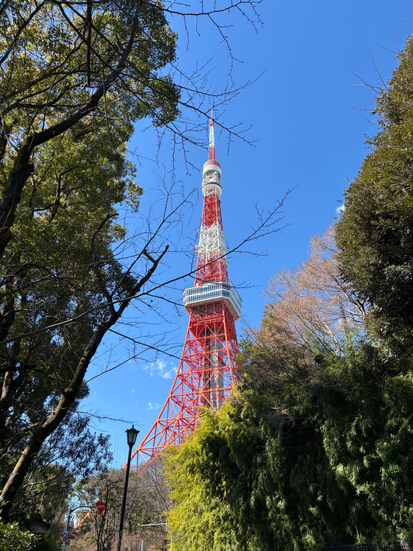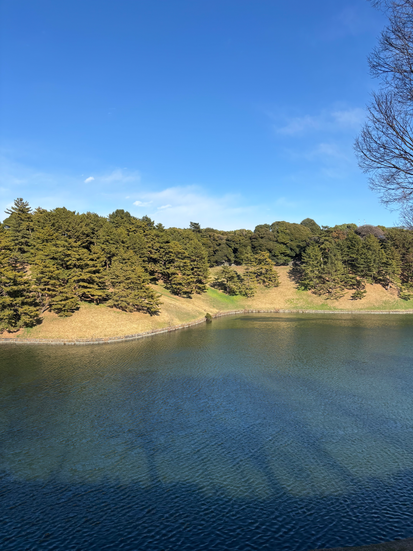Tokyo
- samanthaosys

- Feb 25
- 14 min read
Updated: Jul 12
A recent conversation with a colleague got me thinking about how different cultures can shape work dynamics and how some people struggle when working in a new country. I once spoke to someone from Nigeria who was asked to be more proactive at work. They found this difficult to understand because their culture is different—at work, they usually do what their line managers tell them to do.
Learning about different cultures and mentoring people from around the world is a highlight of my research and work. So, when I got the opportunity to join my husband on his business trip to Japan, I was thrilled. He works for Uniqlo, a Japanese company, and every few years has the chance to visit their main office in Tokyo. This time, I was able to tag along.
Having worked at Uniqlo for many years, my husband is well-versed in the cultural nuances and was able to prepare me a little. For example, he reminded me that when exchanging business cards, it’s important to use both hands and never put the card in your pocket in front of the giver. Also, sticking your chopsticks into food is considered disrespectful.
While walking around Japan on my own, I listened to The Chrysanthemum and the Sword, a study of Japan written by American cultural anthropologist Ruth Benedict in 1946. Benedict compiled this analysis for the US Office of War Information to help understand and predict Japanese behaviour during WWII. The book examines the contradictions in traditional Japanese culture, and its influence shaped Western perceptions of Japan during the occupation. It also popularised the distinction between guilt cultures and shame cultures. However, it is essential to consider the historical and political context of such analyses.
This idea stayed with me after I returned home and started reading Imagination: A Manifesto by Ruha Benjamin. The book reinforced the importance of avoiding rigid categorisation. I myself dislike being placed into predefined character types or neurodiversity labels, and I realised that my observations of Japan, like any cultural insights, need to be considered in context. Spending only a week in Tokyo gives me a limited perspective. While anthropologists like Ruth Benedict have provided structured analyses of Japanese culture—sometimes revealing what locals might take for granted—it’s crucial to recognise the historical and political context of such work. Benedict, a white woman conducting research for the American government during World War II, was ultimately helping them strategise their occupation of Japan. This reminds me that any cultural interpretation should be questioned, challenged, and understood with nuance.
Japan’s cultural duality became even more apparent as I explored Tokyo. Mornings were quiet and orderly, while evenings were loud and full of lights and smells. People dressed in either high-quality, minimalist clothing or bold, anime-inspired outfits. Every moment brought a new contrast, making the experience both fascinating and disorienting.
Before flying out, I asked friends and family for recommendations, and I’ve never received so many food suggestions. It fully confirmed the amazing cuisine I was about to experience. I was aware that vegan options are scarce, so I focused on pescatarian options, as I often do when visiting places not prepared for plant-based diets. The food in Tokyo is a constant surprise—in England, eggs are salty, and omelettes are eaten warm. Here, they’re sweet and eaten cold. Sushi rice is warm, and fish is at room temperature. I’m constantly surprised by the taste, smell, temperature, and texture of the food. And although Tokyo’s cuisine is delicious, after a few days of constant umami flavour, we decided to go out for some Italian food.
Note to future self - many people in Tokyo like eating non-Japanese cuisine, so it's best to book restaurants in advance. With affordable dining options, locals frequently eat out.
Below is a day-by-day breakdown of my time in Japan:
Day 1: Haneda - Ginza - Akihabara
The first thing I noticed upon arrival was the absence of strong scents—no perfume, no body lotion—which was a relief for someone with a heightened sense of smell and a tendency for migraines. Stepping onto the train at the airport, another detail stood out: complete silence. Most passengers were on their phones, and any conversations were whispered. We could hear every creak of the train carriages.
We landed later than expected due to earlier aircraft maintenance, and the 14-hour flight was gruelling, but we knew the best way to combat jet lag was to push through until evening. So, we left our bags in the hotel lobby and headed out, as we still had half a day to explore.
Our hotel was in Ginza, a stylish and upscale neighbourhood in Tokyo, known for its boutiques and restaurants on both the high streets and side alleys. From there, we made our way south to Akihabara to explore the gaming and technology shops. Akihabara is a vibrant district in central Tokyo, renowned for its deep connection to gaming, technology, and anime culture. Often referred to as "Electric Town," it has become the go-to destination for anyone with an interest in electronics, gaming, and pop culture.
As soon as you step off the train, you're immersed in a world of neon signs, bustling streets, and towering electronics stores. The area is home to some of the largest retailers in Japan, selling everything from the latest gadgets and computer parts to rare video games, anime merchandise, and collectables.
For anime fans, Akihabara is a paradise. You’ll find multiple floors in every store dedicated to figures, manga, posters, and cosplay attire. Many stores also feature entire sections dedicated to "idol" culture, where fans can find everything from CDs to memorabilia of their favourite anime characters or J-pop idols.
The district also has a unique atmosphere with themed cafés, such as maid cafés, where waitresses dressed in maid costumes serve food and drinks, adding to the playful and quirky side of Akihabara. For gaming enthusiasts, arcades line the streets, each filled with rows of colourful machines, offering everything from claw machines to rhythm games.
Despite its modern and digital edge, Akihabara has managed to preserve a sense of old Tokyo, with smaller shops tucked away down narrow side streets selling electronic parts and vintage gadgets. This blend of high-tech innovation and nostalgia makes Akihabara a truly unique and exciting place to visit.
Day 2: Shibuya - Harajuku - Shinjuku
Day 2 was one of two days that Nick would be free from work, so we made the most of it, aiming to explore as much of western Tokyo as possible. We took the metro from Ginza to Shibuya, where we saw the famous Shibuya crossing in the morning hours—much quieter than it would be later in the day. From there, we made our way to Meiji-Jingu, one of the first temples I would visit during our stay.
One of my favourite discoveries from this trip was goshuin and eki stamps. While walking through the Meiji Jingu inner garden (Gyoen), I noticed a European couple using a red stamp in a notebook. Initially, I didn’t think much of it, but at the Meiji Jingu Shinto Shrine, I saw people in a queue holding similar notebooks. I decided to investigate further and learned that throughout Japan, you can collect goshuin, a red stamp that visitors receive from shrines and temples. It’s a traditional souvenir, marking a visit and connection to deities. For a small fee (about £3), you can have a page in a special Goshuincho—a Japanese-style notebook with long, unfolded pages—stamped and adorned with calligraphy done by temple or shrine monks, including the shrine or temple’s name and the date of your visit. The practice of collecting goshuin dates back over 1,300 years as a sign of devotion.

You can also collect eki stamps, which are free rubber ink stamps found at many train stations in Japan. These stamps often feature designs that represent the station’s city or surrounding area, including landmarks, mascots, or local products. I used the same Goshuincho to collect both eki stamps and goshuin, and after just one week, my notebook was almost full.
We continued our exploration north through Yoyogi and on to Golden-Gai in Shinjuku to see Godzilla emerging from a building. After lunch, we made our way back south through Shinjuku Gyoen and on to Harajuku, where we visited a shop called Momotaro that sells high-quality jeans. Unfortunately, many of the styles we were interested in were sold out (with a 10-week waiting time), so I ended up purchasing a standard pair, and Nick left empty-handed.
We then returned south to Shibuya to take some photos at the crossing at night. It was fun to see so many people capturing the moment for their social media. One couple near us ran out onto the crossing at least five times each time the pedestrian lights changed. That was just while we waited for Nick to find the next spot we wanted to visit—I'm sure they took even more shots after we left.
Feeling tired and jet-lagged, we decided to skip further sightseeing and head back to our hotel.
Day 3: Sky Tree - Asakusa
With Nick at work for the rest of the week, I met up with a friend from my university days who now gives guided tours around Tokyo. We started our day at Tokyo Sky Tree, an impressive structure in the south-east of the city. The shopping mall beneath it is a popular date spot for local couples, so we wandered through before taking the train to Asakusa.
Our first stop was the Asakusa Culture Tourist Information Centre. From its viewing deck, we had a clear view of several landmarks, including the Philippe Starck-designed Asahi Beer Hall, which is meant to resemble a flame but looks more like Trump’s toupee, and the Asahi headquarters building, which resembles a pint of beer. From there, we could also see Sensō-ji, Tokyo’s oldest Buddhist temple, which was next on our list.
To reach Sensō-ji, we passed through the main gate, flanked by statues of Raijin and Fujin, the gods of thunder and wind. This led us onto Nakamise-dori, a bustling street lined with small shops selling tourist souvenirs—though of much better quality than one might expect. Along the way, I tried a traditional Japanese sweet on a stick, which, as expected by now, was both delicious and unusual. I also received an omikuji—a paper fortune. These fortunes must be read quickly (not an easy task when they are written in tiny Japanese characters that challenge even the best translation apps). If the fortune is bad, it should be tied somewhere near the temple to prevent it from coming true. Mine was ‘quite good’ and featured a drawing of a black cat.
After collecting another goshuin for my notebook, we walked to Kappabashi Street, also known as "Kitchen Town." This area is where restaurants purchase kitchenware, supplies, and, most excitingly, food replicas. These incredibly realistic plastic food models might be one of my favourite discoveries from the trip.
In the evening, Nick and I went out for dinner before calling it an early night—something that became a pattern for the rest of our stay, as we were constantly exhausted.
Day 4: Ueno
Martyna and I met for breakfast near Tokyo Zoo before heading to our first destination of the day—the Tokyo National Museum. We walked through Ueno Park, passing several other galleries and museums along the way.
The museum itself was impressive, though a bit confusing to navigate, and we unintentionally went through the main halls in reverse order. One noticeable difference from European museums was the lack of seating. In Europe, visitors often sit, sketch, and take their time contemplating artworks, whereas here, the steady flow of people moved continuously through the exhibits. My favourite part of the collection was the woodblock prints—printmaking has always been my preferred art form, a bias I picked up during my studies in Poland.
After the museum, we explored the surrounding streets and had lunch at Marugame, one of my go-to places in Tokyo. It’s a fast-food udon chain that serves excellent food at very affordable prices.
We then returned to Ueno Park to visit Benten-dō, a small temple on a tiny island in the middle of the lake. While the scene was peaceful, I couldn’t help but wish I were visiting a month later during sakura season. The bare lotus stalks in the lake and the branches of cherry trees reaching towards the water must create a stunning view when in full bloom. However, Martyna pointed out that during sakura season, it’s nearly impossible to get an uninterrupted photo, as people queue just to take a picture under the trees. She recommended February as the ideal time to visit Tokyo—there’s some sunshine, fewer tourists, and it falls between the New Year celebrations and cherry blossom season.
That evening, feeling a little tired of Japanese cuisine (it is possible to have too much umami), Nick and I found a small restaurant that served "normal" food with the help of robots. I enjoyed a plate of chips with generous amounts of ketchup, while Nick opted for a full plate of chicken.
Day 5: Pokémon Stores in Japan
Being in Japan provided the perfect opportunity to stock up on gifts for the rest of the year. Not only could I buy tax-free, but I also had access to anime merchandise that is difficult to find in Europe. Both my son and sister are big Pokémon fans, so visiting Tokyo’s three biggest Pokémon stores was essential.
My first stop was Pokémon Center Mega Tokyo & Pikachu Sweets in Toshima City, located inside the Sunshine City shopping complex. This store was the largest and most overwhelming, packed with plush toys, trading cards, stationery, and exclusive Japan-only merchandise. As I was there 20 miuntes before the store opened I had to stand in a queue with other Pokemon fans. But on the dot the doors opened and all of us were allowed to come in. After doing the shopping you can go to the attached Pikachu Sweets café, which is a fun addition, offering adorable Pokémon-themed desserts and drinks.
Next, I visited the Pokémon Store Tokyo Station Shop in Chiyoda City. Unlike the sprawling Mega Tokyo location, this store was more compact but just as exciting. Being inside Tokyo Station, it catered to travelers looking for quick Pokémon-themed souvenirs. The selection focused on exclusive Tokyo Station designs, including Pikachu dressed as a stationmaster, which was sadly unavailable on the day I was there.
My final stop was Pokémon Center Tokyo DX in Chuo City, which is connected to the Pokémon Café. This store had a sleek and modern layout, making it easier to browse without feeling overwhelmed. A highlight here was the beautifully designed merchandise, including elegant postcards, premium figurines, and collectible Pokémon artwork. I had hoped to visit the café, where every dish is Pokémon-themed, but reservations were fully booked. Instead, I picked up some Tokyo DX.
By the end of the day, I had spent more than planned, but I couldn’t regret it. One of the most charming aspects of these stores is how every staff member reminds you to take care of your Pokémon when handing over your purchases. The enthusiasm was infectious, and I found myself buying keychains for myself alongside gifts.
It struck me how central keychains seem to be in Japan’s retail culture. Everywhere I went, from convenience stores to high-end boutiques, there were endless displays of small trinkets. They feel like the Japanese equivalent of greeting cards in the UK—a small but essential part of everyday shopping.
Day 6: Roppongi
Having already explored the eastern side of Tokyo on Day 1 (Ginza and Akihabara), the western side on Day 2 (Shibuya, Shinjuku, and Harajuku), and the north-eastern side on Days 3 and 4 (Asakusa and Ueno), I decided to spend the day in Roppongi, located further south.
I started the day at Zōjōji Temple, a significant Buddhist temple with a striking contrast between its traditional architecture and the backdrop of the modern Tokyo Tower. One of the temple’s rituals allows visitors to begin their Buddhist journey by writing the name of Buddha, their own name, and an oath to Buddha on a piece of paper, which is later burned as an offering.
The temple grounds were filled with rows of Jizō statues, small stone figures dressed in red crocheted hats and holding colourful windmills. These statues represent guardian deities of children and are dedicated to the protection and well-being of young children and grandchildren. They also serve as memorials for stillborn or miscarried children, with the hats and windmills symbolising prayers for their safety and warmth in the afterlife. It was a moving sight, made even more poignant by the gentle movement of the windmills in the breeze.
From Zōjōji, I walked towards Roppongi Hills to see the Maman Spider Sculpture, a massive bronze spider by artist Louise Bourgeois. It is an impressive piece of public art, standing tall in the middle of the modern Tokyo City View complex.
Next, I headed to Tokyo Midtown, a sleek multi-use complex known for its shops, museums, and gardens. One of my main reasons for visiting was to try wagashi—traditional Japanese sweets. I stopped at Toraya, a confectionery brand that has been making wagashi for over 500 years since its founding in Kyoto. Unlike mass-produced sweets, Toraya’s wagashi are handcrafted using traditional methods, meaning they must be eaten fresh. I bought a selection to take home but also picked up a namagashi, a type of delicate seasonal wagashi that needed to be eaten the same day.
Later in the evening, Nick and I shared the namagashi back at the hotel. As with many things we had eaten in Japan, the flavours, textures, and even the smell were different from what we expected. It wasn’t overly sweet, with a subtle tartness that made it feel more refined than typical Western desserts.
I had also planned to visit 21_21 Design Sight, one of the few museums in the world dedicated entirely to design, but unfortunately, it was closed as they were preparing a new exhibition. It was disappointing, as I had been looking forward to seeing their current work, but I’ll make sure to read up on their exhibits once I’m back home.
Day 7: Last-Minute Shopping and a Walk Through Central Tokyo
Our final full day in Tokyo was spent running around the city, ticking off the last items on our shopping lists. One of our main stops was Don Quijote (called by locals "Donki"), a chain of massive multi-storey discount stores that sell just about everything imaginable. And when I say everything, I mean it—often arranged with no apparent logic. You can find sanitary towels next to Kit Kats, luxury skincare products stacked beside budget electronics, and anime merchandise crammed into the same aisles as household cleaning supplies. The sheer chaos of it all was overwhelming, but I regretted not visiting earlier, as I could have sorted out at least half of my shopping in one go and at a lower price. If you're ever in Japan, start with Don Quijote so you know what they stock—you might save both time and money. The shopping experience may not be as pleasant as in more curated stores, but it is incredibly convenient.
After finishing our shopping, we took a leisurely stroll through central Tokyo, passing by the Akasaka Imperial Property and the Fukiage Imperial Gardens. While these areas are historically significant, they are not open to the public, so the experience is limited to admiring them from a distance. As a friend had warned me, it’s not really worth dedicating a full day to, but it was still a pleasant walk and a nice way to round off our time in Tokyo.
Day 8: The Long Journey Home
Day 8 was all about the gruelling 14-hour flight back home. While the flight crew did their best to make the journey as comfortable as possible, there’s no denying that 14 hours is just a few hours too long—especially on the way back, when the excitement of arrival has worn off. Thanks, Putin! (Although, yes, I’m aware this is a very "first-world problem.")
Final Thoughts on Japan
Diversity and inclusivity are fundamental in design. Every opportunity to visit another country and immerse myself in its culture is both valuable and exciting. While books and educational TV series provide great insights, there is no substitute for firsthand experience—walking the streets, trying the food, observing daily life, and engaging with locals. Certain tacit aspects of a culture often go unnoticed until an outsider asks a question, revealing details that even locals may take for granted.
During this trip, I had the chance to spend two days with a friend who now works as a guide for European visitors in Tokyo. I also spoke with some of Nick’s colleagues, which gave me the opportunity to ask questions that Google simply wouldn’t be able to answer. These conversations added another layer to my understanding of Japan—one that goes beyond tourist attractions and guidebooks.
One of the most striking aspects of the trip was the feeling of safety. It’s hard to describe, but not having to worry about pickpockets, leaving my belongings unattended, or walking down unfamiliar alleyways removed a layer of everyday stress I hadn’t realised I carried. There was a quiet sense of calm, even in the busiest parts of the city. My husband hadn’t noticed it until I pointed it out, but as soon as I did, he agreed—despite the overwhelming brightness, noise, and movement of Tokyo’s streets, he felt unexpectedly at ease.
Japan is a place full of surprises, and I hope to return to explore beyond Tokyo. The uniqueness of the culture, from its people to its religious rituals, is something I will miss when I’m back in Europe. But I must admit—I am looking forward to eating a bowl of vegetable soup that tastes the way I expect soup to taste.
And my one final, crucial takeaway: start your shopping at Don Quijote. Go there, buy a keychain.












































































































































































Comments